Mastering your darts line up is crucial for consistent accuracy and higher scores. This guide will break down the essential elements of a proper stance, grip, and throwing technique, helping you develop a reliable routine at the oche. We’ll also cover common mistakes and offer drills to improve your game.
⚠️ Still Using Pen & Paper (or a Chalkboard)?! ⚠️
Step into the future! The Dart Counter App handles all the scoring, suggests checkouts, and tracks your stats automatically. It's easier than you think!
Try the Smart Dart Counter App FREE!Ready for an upgrade? Click above!
Perfecting Your Darts Line Up: The Stance
The foundation of any good throw is a solid stance. Think of it as your launchpad – stability and balance are key. There are generally three types of stances favored by dart players: straight on, side on, and an angled approach. Experiment to find what feels most natural and stable for you. Remember that your **darts line up** starts from the ground up.
Straight On Stance
This stance involves facing the board directly. Your dominant foot should be placed on or near the oche, with your weight balanced. The non-dominant foot provides balance and support. This is a good starting point for beginners as it promotes a feeling of centeredness.
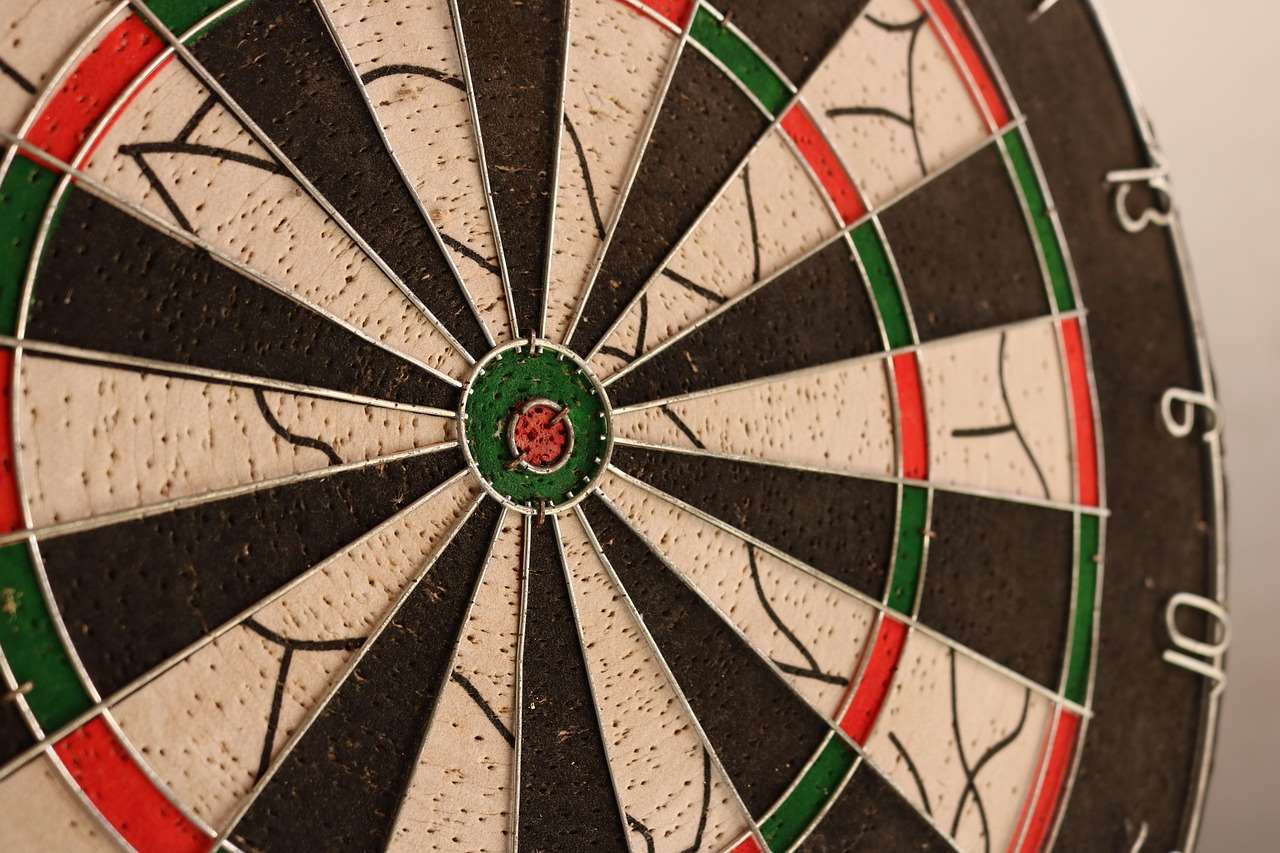
Side On Stance
In the side on stance, you stand perpendicular to the board. This minimizes the distance you need to reach and can feel more natural for some. Again, your dominant foot is at the oche. Many professionals prefer this stance because it allows for a more fluid throwing motion. Think of it as pivoting towards the target. It’s important to maintain a stable base and avoid swaying.
Angled Stance
The angled stance is a hybrid of the straight on and side on stances. It provides a balance of both approaches, allowing for a comfortable reach and a degree of forward momentum. Fine-tune the angle to find what feels best for you. No matter which stance you choose, consistency is paramount. Once you’ve settled on a stance, stick with it and work on refining your technique.
Weight Distribution: Ensure your weight is evenly distributed between both feet to maintain balance. Leaning too far forward or backward can negatively impact your throw. Find your Cricket darts scorer app to log your progress!
The Grip: Connecting with Your Darts
Your grip is your direct connection to the dart. A comfortable and consistent grip is essential for accurate throwing. There’s no single “right” grip; it’s about finding what works best for your hand size, dart weight, and personal preference. However, there are some general guidelines to consider.
Types of Grips
There are numerous grip styles, but some of the most common include:
- The Two-Finger Grip: This grip involves holding the dart with your thumb and forefinger, with minimal support from other fingers. It offers a delicate feel and allows for subtle adjustments.
- The Three-Finger Grip: The most popular grip, this involves using your thumb, forefinger, and middle finger to control the dart. It provides a balance of control and power.
- The Four-Finger Grip: This grip uses your thumb, forefinger, middle finger, and ring finger to hold the dart. It offers maximum control but can feel restrictive to some players.
Experiment with different grips to see what feels most comfortable and secure. Pay attention to how the dart releases from your hand with each grip. A good grip should allow for a smooth and consistent release.
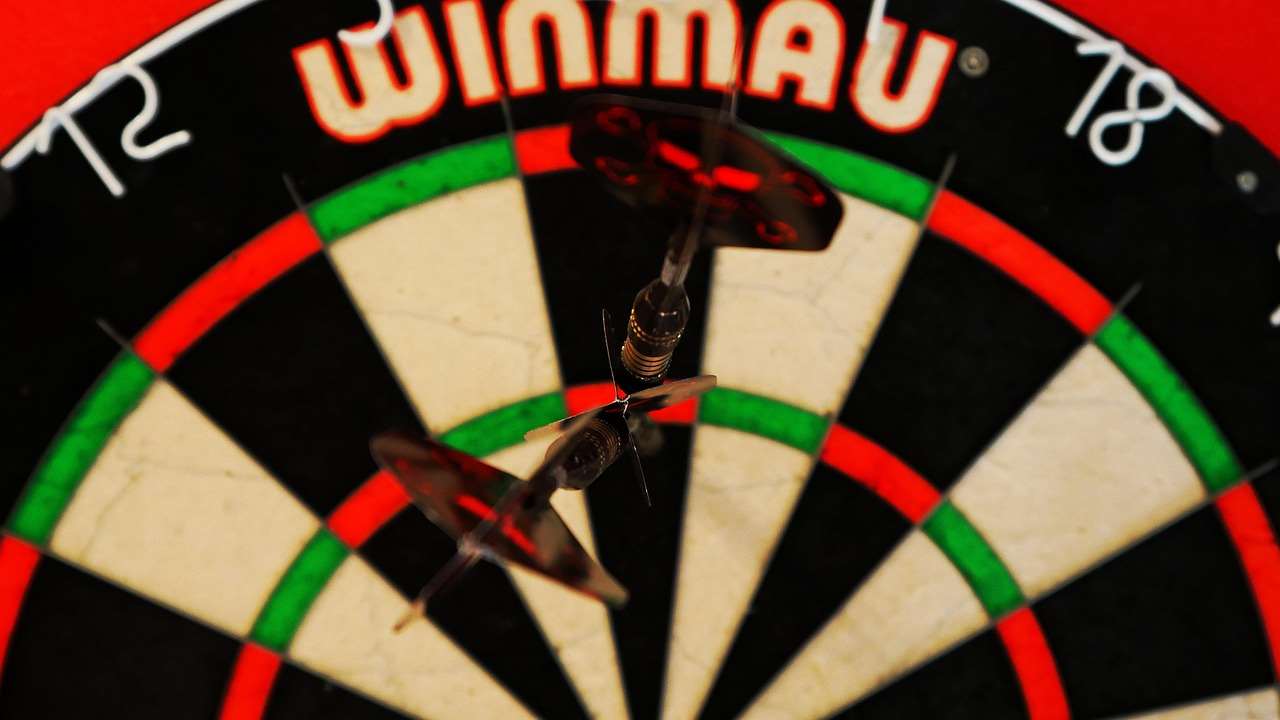
Grip Pressure
Grip pressure is crucial. Holding the dart too tightly can lead to tension and inaccuracy, while holding it too loosely can result in a wobbly throw. Aim for a firm but relaxed grip. Imagine holding a bird – you want to hold it securely enough that it doesn’t fly away, but not so tightly that you crush it.
Grip Consistency
Once you’ve found a comfortable grip, strive for consistency. Place your fingers in the same position on the dart every time you throw. This will help you develop muscle memory and improve your accuracy. Maintaining a stable **darts line up** and grip will become second nature.
Finding Your Sweet Spot: Experiment with moving your grip slightly forward or backward on the dart to find the “sweet spot” where it feels most balanced and controllable.
The Throw: Executing Your Darts Line Up
The throwing motion is the culmination of your stance and grip. A smooth, controlled, and repeatable throwing motion is essential for consistent accuracy. Avoid jerky movements or excessive force. Think smooth acceleration rather than a sudden burst of power.
The Arm Action
Your throwing arm should move in a smooth, pendulum-like motion. Keep your elbow relatively still and focus on using your forearm to power the throw. Avoid swinging your entire arm or body, as this can lead to inconsistency. Visualise a straight line from your eye to the target. The goal is to throw the dart along this line. This is central to the **darts line up** concept.
The Release
The release point is critical. Release the dart at the same point in your throwing motion every time. This will help you control the trajectory and accuracy of your throw. Practice releasing the dart smoothly and naturally. A common mistake is to “push” the dart instead of releasing it cleanly.
The Follow Through
Don’t stop your arm movement abruptly after releasing the dart. Follow through with your throwing motion, pointing your hand towards the target. This helps to ensure a smooth and consistent release. Think of it as finishing the swing, like in golf or baseball.
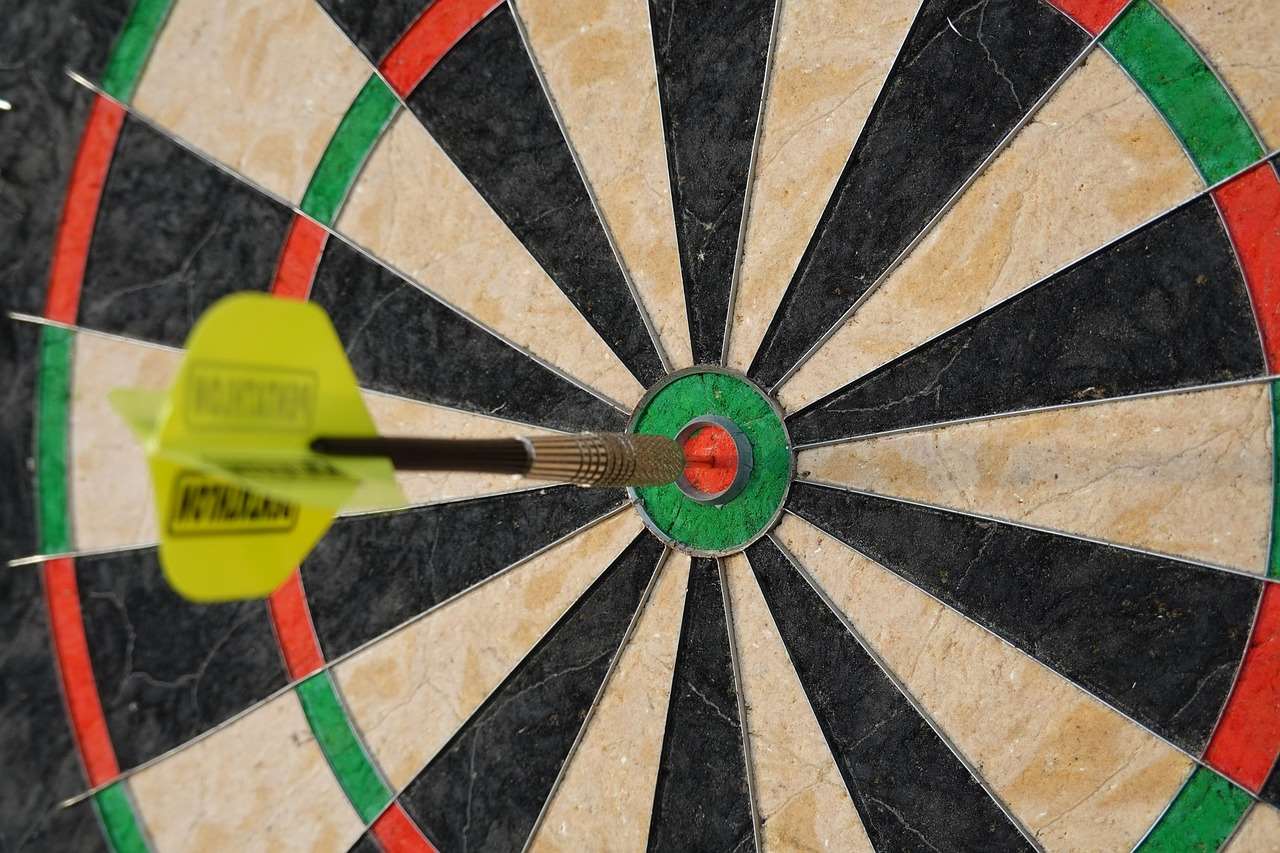
Common Throwing Mistakes and How to Fix Them
- Jerky Movements: Practice throwing slowly and deliberately, focusing on a smooth, fluid motion.
- Elbow Movement: Keep your elbow relatively still. Use your forearm to power the throw.
- Inconsistent Release Point: Practice releasing the dart at the same point in your throwing motion every time.
- Lack of Follow Through: Follow through with your throwing motion, pointing your hand towards the target.
Consistent Practice: The best way to improve your throwing technique is through consistent practice. Set aside dedicated time to practice your throws and focus on refining your technique. Don’t just throw darts aimlessly; have a specific goal in mind for each practice session.
Mental Game: Staying Focused at the Oche
Darts is as much a mental game as it is a physical one. Staying focused, managing pressure, and maintaining a positive attitude are all crucial for success. A solid **darts line up** also depends on a strong mental game.
Pre-Throw Routine
Develop a pre-throw routine that helps you focus and prepare for each throw. This could involve taking a deep breath, visualizing the target, or repeating a positive affirmation. The key is to find a routine that works for you and stick with it consistently. Consistency in your routine translates to consistency in your throws.
Dealing with Pressure
Feeling nervous or pressured during a match is normal. However, it’s important to manage your emotions and avoid letting them negatively impact your performance. Focus on the process rather than the outcome. Remind yourself of your goals and trust your training.
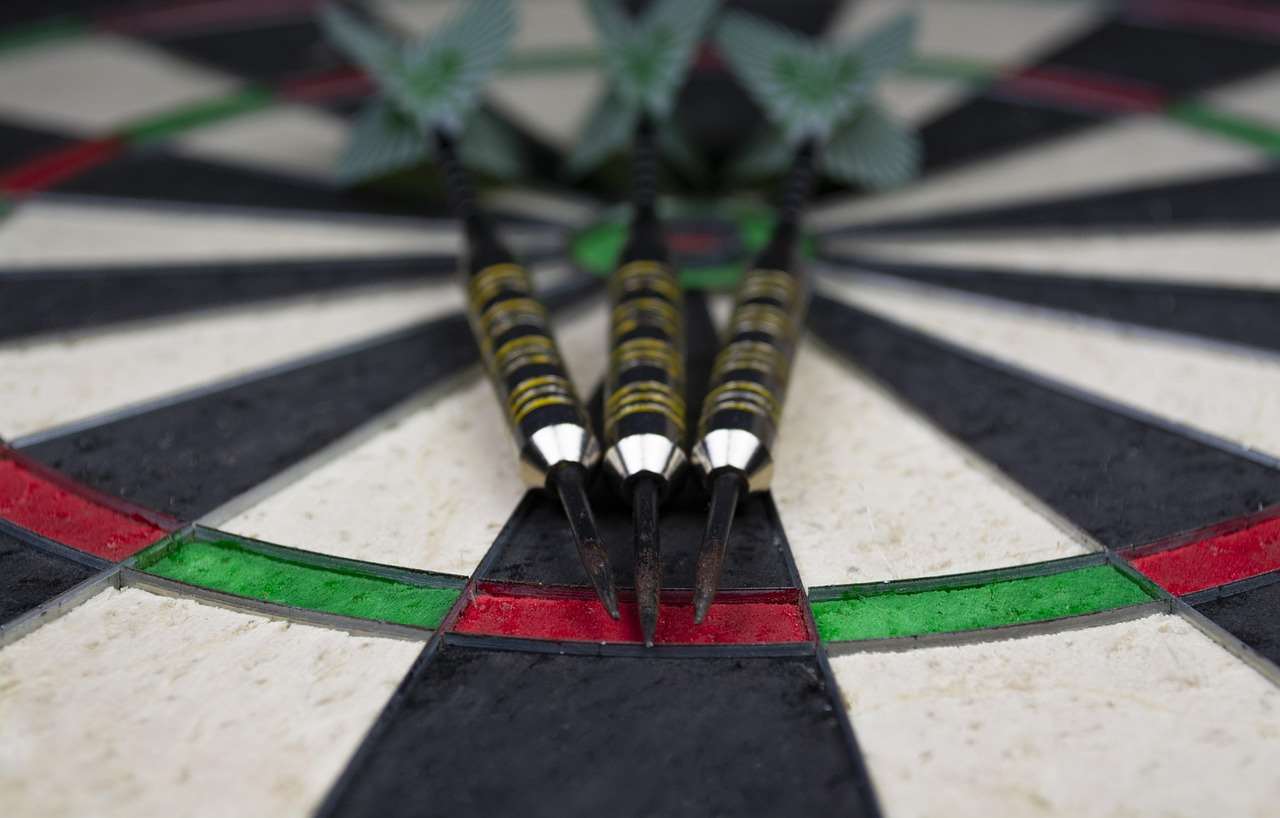
Staying Positive
Maintaining a positive attitude is essential for success in darts. Don’t dwell on missed throws or setbacks. Learn from your mistakes and move on. Believe in your ability to improve and achieve your goals. Practice your mental game like you practice your throws. Visualize success, practice mindfulness, and develop strategies for managing pressure.
Mental Toughness: Develop mental toughness by practicing under pressure. Simulate match conditions in your practice sessions and challenge yourself to perform your best even when you’re feeling nervous or tired. You can find darts flights ebay to personalize your darts!
Practice Drills to Improve Your Darts Line Up
Consistent practice is the key to improvement in darts. Here are some effective drills to help you refine your technique and improve your accuracy.
Around the Clock
This drill involves throwing at each number on the dartboard in sequence, starting with 1 and ending with 20. The goal is to hit each number with a single dart. This drill helps to improve your accuracy and consistency around the entire board.
Doubles and Trebles Practice
Focus specifically on hitting doubles and trebles. These are crucial for finishing legs and scoring high. Set a target number of doubles or trebles to hit in a row before moving on. This drill improves your accuracy on the outer and inner rings of the board.
Checkout Practice
Practice finishing legs from various scores. Start with common checkouts like 40 (double 20) and 32 (double 16) and then move on to more complex checkouts. This drill improves your finishing skills and strategic thinking. Always remember to maintain your perfect **darts line up** during these drills.
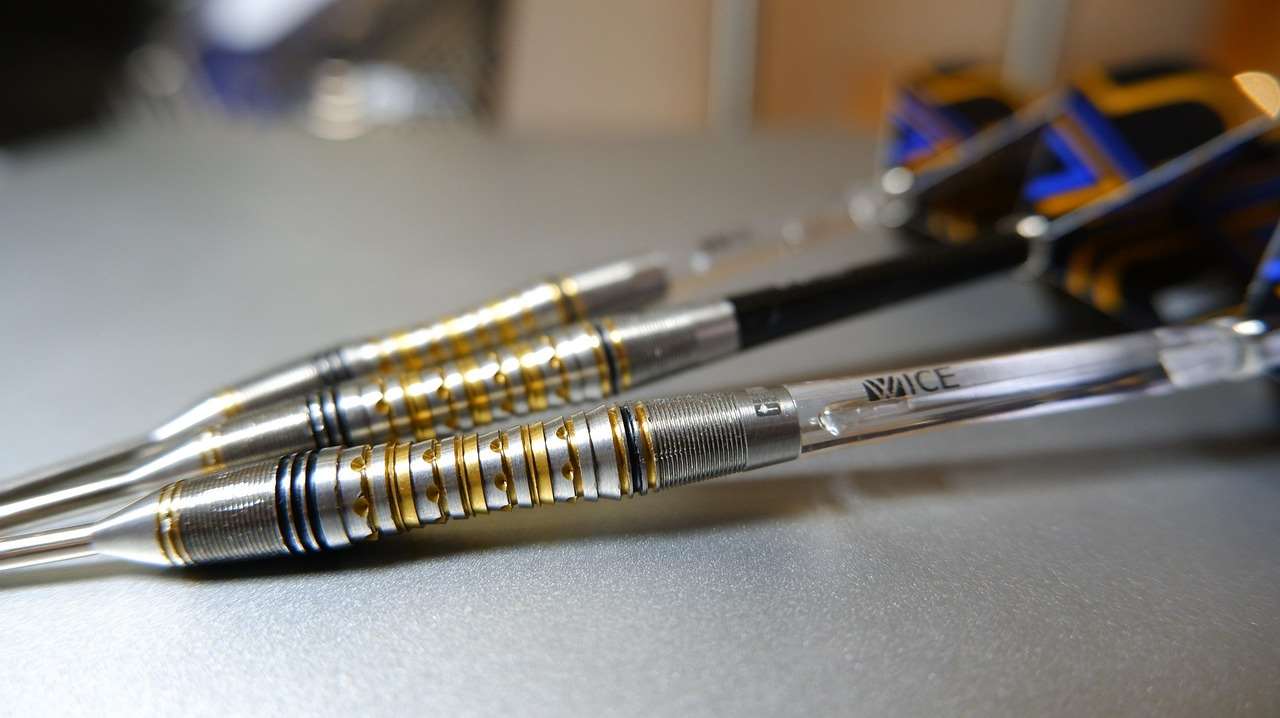
The “3 in a Bed” Drill
This drill helps improve accuracy within a specific number. Focus on hitting three darts into the same number on the board. Try it with the 20 to sharpen your high-scoring potential or the 19, which can be particularly useful strategically.
Track Your Progress: Keep a record of your scores and progress in each drill. This will help you identify areas where you need to improve and track your overall improvement over time. Consider using a darts scoring app to track your statistics and identify areas for improvement. darts score littler is a related term!
Equipment Considerations: Choosing the Right Darts
The darts you use can significantly impact your performance. Finding the right darts for your grip, throwing style, and personal preference is essential. When considering your **darts line up**, remember your equipment is a part of it.
Dart Weight
Darts are available in a range of weights, typically from 18 grams to 30 grams. Heavier darts tend to be more stable in the air, while lighter darts can be easier to control. Experiment with different weights to see what feels best for you.
Dart Barrel
The barrel is the main body of the dart. Barrels come in a variety of shapes, sizes, and materials. Some barrels are smooth, while others have knurling or grooves for added grip. Choose a barrel that feels comfortable and secure in your hand.
Dart Flights
Flights are the wings at the back of the dart. Flights affect the dart’s stability and trajectory in the air. Smaller flights provide less drag and allow for a faster, straighter flight, while larger flights provide more drag and stability. Experiment with different flight shapes and sizes to see what works best for your throwing style.
Try Before You Buy: If possible, try out different darts before you buy them. Many dart shops and pubs have practice boards where you can test out different darts and see what feels best for you. dart zone max outlaw mods might be of interest as well.
Conclusion
Mastering your darts line up is a journey that requires dedication, practice, and a willingness to experiment. By focusing on your stance, grip, throwing technique, and mental game, you can develop a consistent and accurate throw that will help you improve your game and achieve your goals. Remember to be patient, persistent, and enjoy the process. Now it’s your turn – get to the oche and start practicing! Start by solidifying your stance, then refine your grip, and smooth out your throw. What are you waiting for?
Hi, I’m Dieter, and I created Dartcounter (Dartcounterapp.com). My motivation wasn’t being a darts expert – quite the opposite! When I first started playing, I loved the game but found keeping accurate scores and tracking stats difficult and distracting.
I figured I couldn’t be the only one struggling with this. So, I decided to build a solution: an easy-to-use application that everyone, no matter their experience level, could use to manage scoring effortlessly.
My goal for Dartcounter was simple: let the app handle the numbers – the scoring, the averages, the stats, even checkout suggestions – so players could focus purely on their throw and enjoying the game. It began as a way to solve my own beginner’s problem, and I’m thrilled it has grown into a helpful tool for the wider darts community.